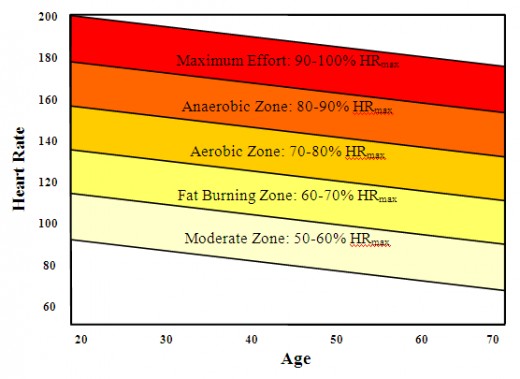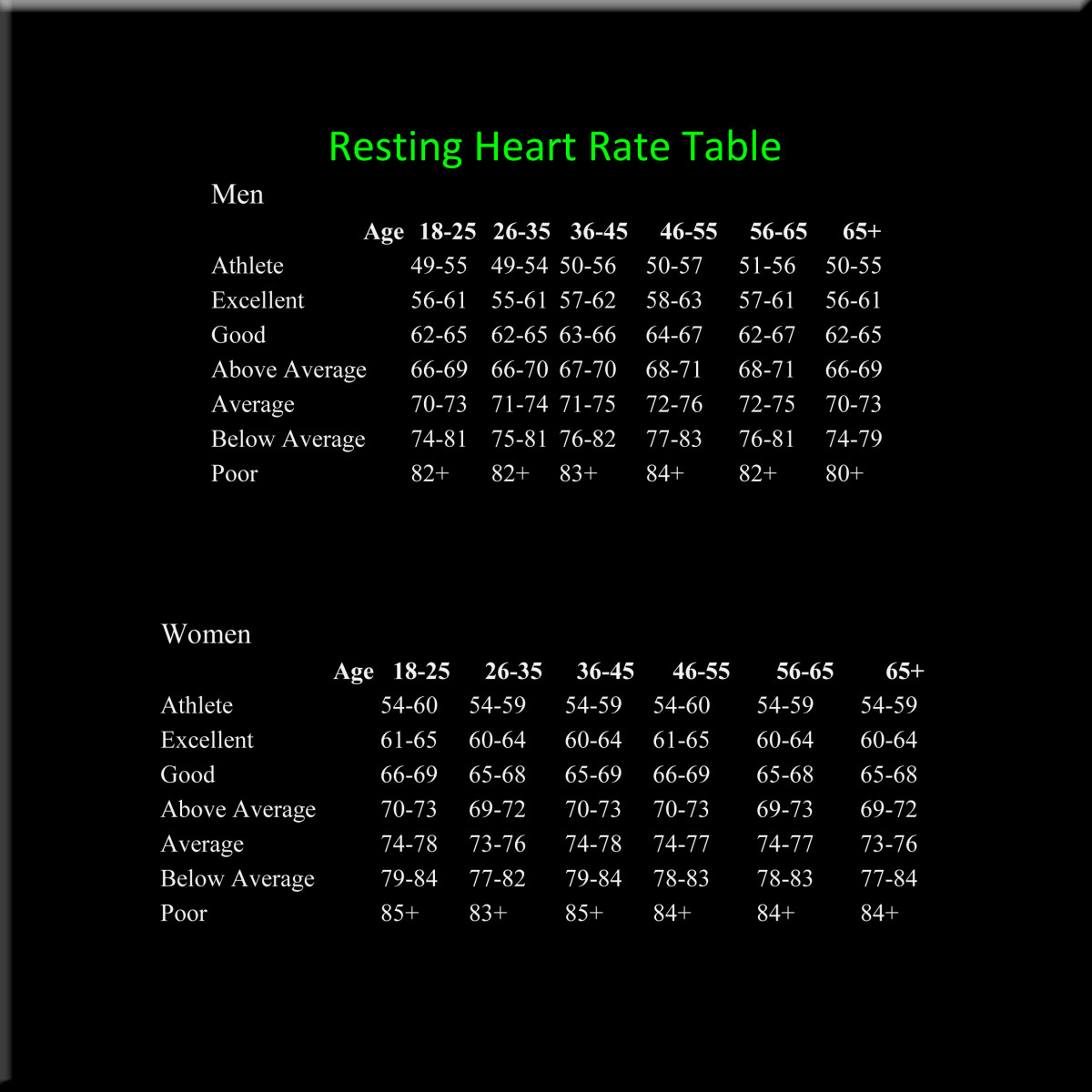Simple Guide to Max Heart Rate and Training Zones
Despite being active and having played and coached various sports, I always thought that those people you see stopping and measuring the pulse while they exercise are just a little too hardcore for me.
But after a little research, I found that by measuring your heart rate, you can determine if you're working TOO hard if your goal is to burn fat, for example. Or if your goal is to burn the most calories, there is an optimum range of beats per minute. And I learned that it's a lot easier than expected.
Once you determine just a handful of numbers, then all you have to do is commit these to memory and you can tailor your workouts and your effectiveness like the pros.
First, you already know this, but I'm going to say it anyway:
Before starting any exercise program, consult your physician. In other words, don't be stupid and hurt yourself.
Bottom Line
Once you know your Maximum Heart Rate, you simply multiply that times your Training Zone.
That's it!
You choose your training zone based upon your fitness goals.

Training Zones
Zone 1: 50 to 60% -- Warm up
This zone has been shown to help decrease body fat, blood pressure, and cholesterol. It also decreases the risk of degenerative diseases. This is the recommended range for those who are just beginning to exercise, especially because there is a low risk of injury.
80-85% of calories burned in this zone are fat calories (from fat stores)
3-7 calories per minute
Zone 2: 60 to 70% -- Fat Burning
This zone provides the same benefits as the warm up zone, but is more intense and burns more total calories.
65-85% of calories burned in this zone are fat calories
7-12 calories per minute
Zone 3: 70 to 80% -- Aerobic or Endurance Training
The aerobic zone improves the cardiovascular and respiratory system, and increases the strength of your heart. This is the preferred zone if you are training for an endurance event.
50% of calories burned in this zone are fat calories, while more calories are burned in total.
12-17 calories per minute
Zone 4: 80 - 90% -- Anaerobic or Performance Training
The anaerobic zone improves endurance and your ability to overcome fatigue.
15% of calories burned in this zone are fat calories, but since it is a high intensity zone, many more calories are burned.
17-20 calories per minute
Zone 5: 90 - 100% -- Maximum Effort
Although this zone burns the highest number of calories, it is very intense. You should only train in this zone if you are in very good shape and have been cleared by a physician to do so.
20+ calories per minute
Maximum Heart Rate
Your maximum heart rate (Max HR) is a specific number, the maximum number of contractions per minute that your heart can make.
Max HR is a fixed number, unless you become unfit.
Max HR cannot be increased by training.
Max HR only declines with age in sedentary individuals.
Max HR tends to be higher in women than men.
3 Ways to Calculate Maximum Heart Rate
1. The Age Method
Subtract your age from 226 for women, and 220 for men.
Find your training zone below and multiply that number times your maximum rate.
2. The Karvonen method of calculating your exercise heart rate is considered the gold standard.
One of the problems with the Age Method (220 minus age equation) is that it makes no allowances for individual differences in resting heart rate (Rest HR). By incorporating this into the equation, a more accurate training zone can be determined.
Here is the actual formula:
220 - age = Max HR
Max HR - Rest HR = Heart Rate Reserve
(Heart Rate Reserve X Training %) + Rest HR
The best time to check your resting rate is just before you get up in the morning after a good night’s sleep. Take the average of two or three mornings’ readings for greater accuracy.
Here is a Karvonen Heart Rate Calculator: http://www.briancalkins.com/HeartRate.htm
3. The most accurate method is a treadmill stress test administered by a professional. If you're over 35, overweight, have been sedentary for several years, or have a history of heart disease in your family, clinical testing is recommended.
How to Measure Your Heart Rate
Wearing a heart rate monitor is the easiest, most accurate method of checking your heart rate. Many heart rate monitors actually beep for you, telling you without even looking if you're going below or above your desired zone.
For example, I was riding with a friend and we quickly learned that we kept going TOO fast to burn the most fat. We kept having to slow down. That was refreshing to know that we actually had to work LESS to burn more fat. (It took longer, but we burned more fat calories than had we been without the monitor.)
But if you don't have a monitor, here is another easy way:
The easiest place to feel your own heart beat is the carotid artery. (You may also use the radial artery on the underside of your wrist.) Place your index finger on the side of your neck between the middle of your collar bone and your jaw line.
You can count the beats for a full 60 seconds to be most accurate, but it's easier to just count for 6 seconds and multiply by ten (add a zero). For example, if you felt your heart beat 15 times in 6 seconds, the number would be 150 for a full 60 seconds.
You can also count for 30 seconds and multiply by 2, or 15 seconds x 4. The longer you count the more accurate your reading. Whichever method you choose, stick with that to be more consistent.
A Few Thoughts about Heart Rate and Zones
If you want to get a good aerobic workout, strengthen your heart and lungs, and lose weight, you must bring your heart rate up to 60-80% of your Max HR.
A heart rate below 60 percent of its maximum is not an aerobic workout and will not help you to get fit or lose weight. It's nice to go for a stroll, but if your goal is to get a little more fit, you'll want to bump up the pace.
Your resting heart rate (or pulse rate) is a measure of your overall physical condition. The lower your resting heart rate, the more efficient your heart is at pumping blood throughout your body. Your heart will not last forever and if it has to work less, it will last longer.
If you’re just beginning to exercise, keep your heart rate at the lower end, near 50 to 65% of its maximum. As you begin to feel comfortable exercising within this range, you can gradually intensify your workout so that your heart rate falls into the 75 to 80% zone.
So Let's Review
Determine your heart rate
Multiply this by the desired zone
Memorize or write down your desired heart rate zones
Exercise or perform an activity and measure your pulse, keeping your body within the proper beats per minute.
That's it. And so now, YOU can be one of those hardcore exercise fanatics and impress people like me.
Now go be healthy!








